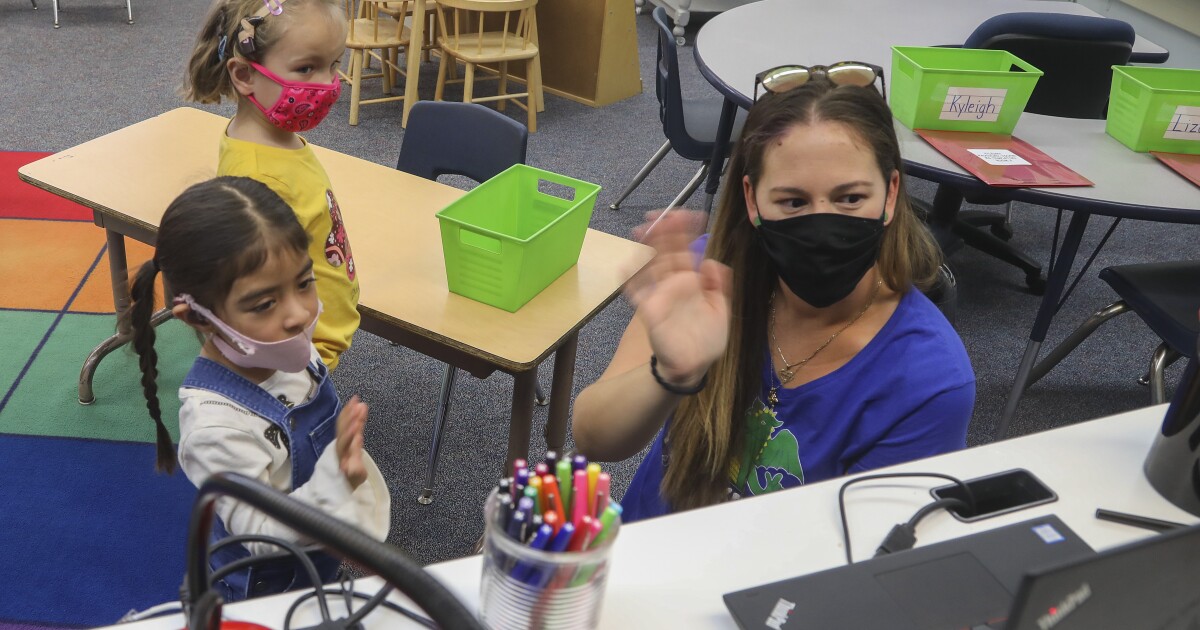district is CEO and Head of Engagement and Innovation at e3 Civic High. She lives in Carmel Valley.
In March, when schools suddenly closed and in many cases did not operate online for four to six weeks, the state’s superintendent of public instruction, Tony Thurmond, asked schools to put implementation of ‘exemption’ policies. These policies included freezing grades to what they were before the stay-at-home order in March and/or implementing pass/fail grading.
In the fall, when schools reopened in the virtual world, no such policy was in place. Yet students were still not fully prepared to be online, and many districts lacked single sign-on systems or unique back-end technical systems that could easily manage remote technology. Some kids still didn’t have devices or WiFi, teachers still weren’t trained in online teaching best practices, and many continued to struggle with tech platforms like Zoom, Microsoft Teams, and Google. Meet.
The school year has started with parents having to continue working side by side with their elementary and middle school children or leaving them to fend for themselves with many different apps and passwords as well as partial teaching days. With all this, the children still had to finish their homework. Some parents have had to stop working altogether, putting many families at risk of poverty and homelessness. At the same time, secondary school students, especially our poorest and most vulnerable students, began to plummet.
We provide this platform for community feedback for free. Thank you to all Union-Tribune subscribers whose support makes our journalism possible. If you’re not a subscriber, consider becoming one today.
They were experiencing what I call “the rona virus hurricane,” with family members sick with the virus or hospitalized with COVID-19, parents losing their jobs or divorced, and families homeless. It has been a complete nightmare for many. Then, in November, the first quarter grades revealed what we already knew: kids needed more safety nets to succeed, including mental health support.
Schools received additional funding with the onset of the COVID-19 pandemic, but few used those dollars to hire more social workers and family therapists to combat the onslaught of challenges facing students, parents and teachers.
So where do we go from here? First of all, there should be no going back to the way things were before. Instead, we should deliberately create a new normal with safety nets as we transition. Here are some suggestions.
Create a new normal in which technology is a pervasive component. We can do this by making sure there is a single sign-on system using something like Dropbox or a Clever single sign-on platform for K-12 education. We can ensure all systems are accessible remotely to resolve issues quickly. This will likely mean having the same or similar district-owned device for each student.
Create a five-year strategic plan that includes understanding the megatrends and game-changers of our time, then create a robust professional learning system for teachers and tech teams.
Use additional federal COVID-19 relief funds to hire social workers and family therapists, but before they start, assess needs and create a support and recovery plan.
Create release policies to help students get through these difficult times. Districts can incentivize students, especially high school students, to take classes by having a 70% or C grading policy that would go into effect each day a student shows up online and attempts to attend class for the day. . Schools can implement no-grade policies for high school students who fail classes. This would mean that if students failed a course, it would not negatively affect their grade point averages. Instead, they should retake the course. These approaches can be implemented with competency-based grading policies that do not penalize children for turning in assignments late and provide multiple opportunities to demonstrate competency in skills and content.
Plan to use funds from future COVID-19 relief bills to develop ambitious summer school programs to catch up with children who need repeat classes. Start assessing needs now and start developing summer programs.
The COVID-19 pandemic has exposed weaknesses in our education infrastructure and also provided an opportunity to rethink our approach to student learning in a more holistic way. It is now up to leaders – including board members working hand-in-hand with students, parents and educators – to boldly move forward in seeking to prepare our students for the new future and the workforce. work.



